ThoughtSpot Cloud Documentation
ThoughtSpot Cloud™ is our hosted and managed Software as a Service (SaaS) offering. ThoughtSpot Cloud is available on Amazon Web Services (AWS) and Google Cloud Platform (GCP). Customers can choose the cloud and region where they would like their ThoughtSpot Cloud service deployed.
ThoughtSpot Cloud offers multiple advantages over deployment form factors that you have to manage and maintain within your own organization.
Find topics for the common types of ThoughtSpot users.
What’s new in ThoughtSpot Cloud
September 2025 10.12.0.cl
| Features marked as Beta are off by default. To enable them, contact ThoughtSpot support. |
Spotter Coach business terms
You can now directly add business terms to Spotter Coach, rather than approving and editing terms from within a Spotter conversation.
For more information, see Spotter business terms.

Coach Spotter from conversation Early Access
You can now coach Spotter without leaving your conversation. Click Add to coaching below an Answer to teach Spotter how to answer similar questions in the future. To enable this feature, contact your administrator.
For more information, see Coaching within a conversation.
Spotter natural language instructions Beta
You can now use natural language instructions to provide global feedback to Spotter that carries over to any query on the underlying data model. To provide natural language instructions, select the instructions icon in Spotter and type a directive about how Spotter is to interpret the question. For example, you can instruct Spotter to specify the date filter as the last 30 days if the user does not provide a date keyword. To enable this feature, contact ThoughtSpot support.
For more information, see Natural language instructions in Spotter.
Spotter context in feedback Beta
Rather than simply training Spotter Coach to recognize search tokens in reference questions, you can now add context, natural language explanations of why those tokens apply to that answer. For example, you could add an implicit rule to a sample reference question, clarifying that sales should only be calculated on completed transactions. Adding context to coaching improves accuracy and makes it easier to tailor Spotter to your data. To enable this feature, contact ThoughtSpot support.
For more information, see Context in Spotter.
Rerun queries in Search data Early Access
This functionality allows users to execute the same search query again without needing to refresh the browser or modify the query, and update results with the latest data.
With this feature, users can simply click  to rerun the query, which is useful for testing data model changes, formula updates, or database reloads. To enable this feature, contact ThoughtSpot support.
to rerun the query, which is useful for testing data model changes, formula updates, or database reloads. To enable this feature, contact ThoughtSpot support.
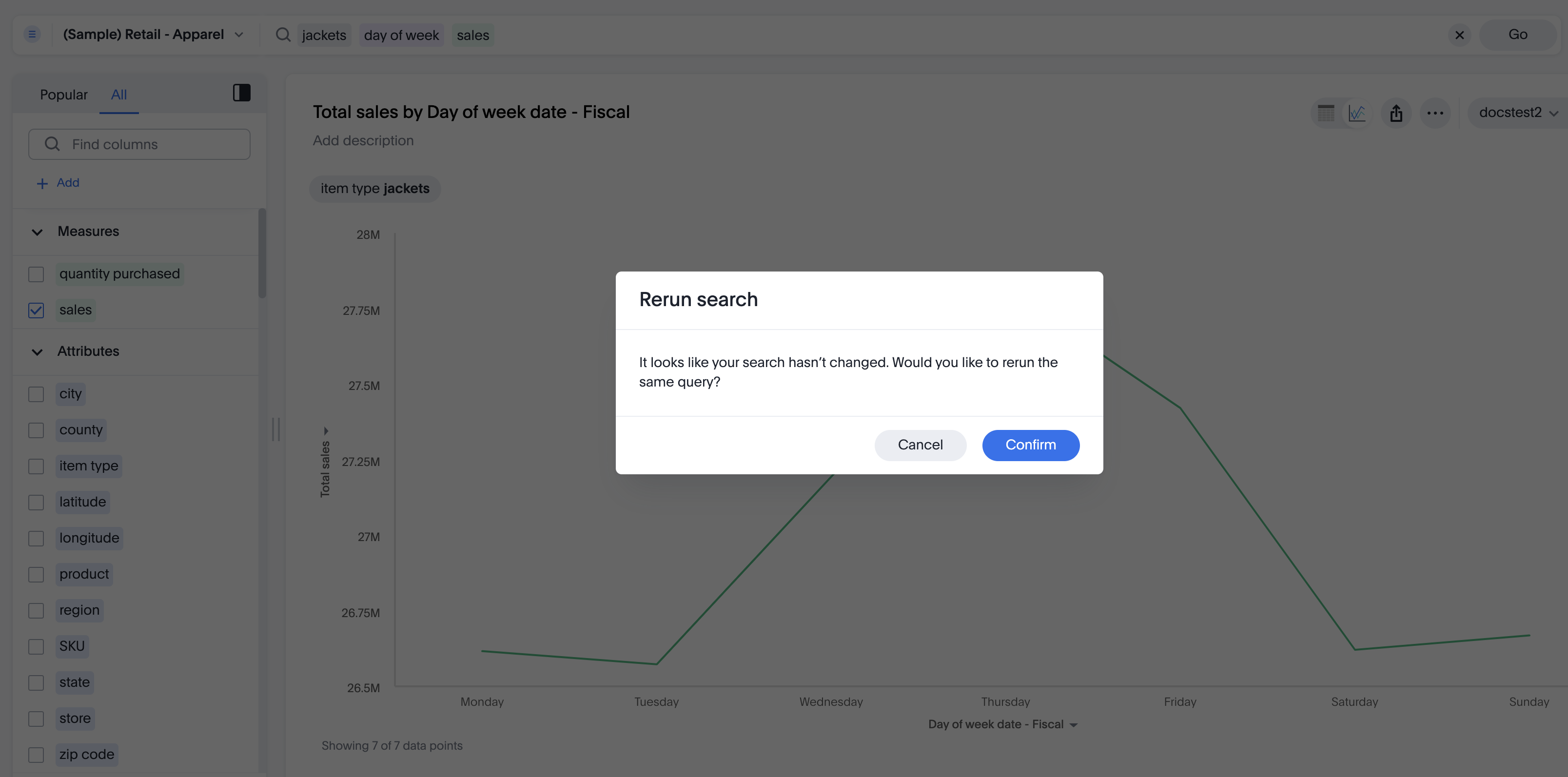
Change comparison for single-point KPIs Beta
You can now make your single-point KPIs more powerful and actionable with the new aggregated KPI chart. You can see how your KPI has changed from the previous period even for queries like 'sales last 14 days' or 'sales last 2 months'. To enable this feature, contact ThoughtSpot support.
For more information, see Change analysis for single-point KPIs.
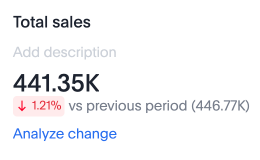
Custom sort order on Answers Early Access
You can now define and modify a custom sort order for attributes directly in an Answer. Sort order defined in the Answer overrides the sort order defined in the Model for that particular Answer. To enable this feature, contact your administrator. For more information, see Define or edit a custom sort order for an Answer.
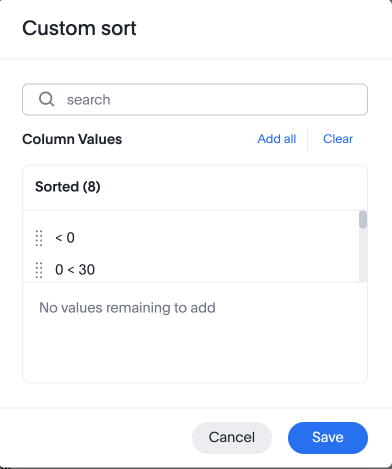
Include or exclude cover and filter pages from a Liveboard PDF Early Access
The option to exclude cover and filter pages from Liveboard PDFs is now available to all users and on by default. ThoughtSpot Liveboard PDFs include a cover page and filter pages that contain information about the filters applied. You can now use the PDF Options checkboxes to choose to include or exclude these page when downloading or scheduling a Liveboard PDF. Cover and filter pages can be excluded for a schedule or download by the user. An administrator can also set cover and filter pages to be included or excluded by default in Admin settings under Downloads & Schedules.
For more information, see Download a Liveboard as a PDF.
KPI alert emails
KPI alert emails now display a visualization of your KPI, along with the change from the previous time bucket, and the threshold condition.
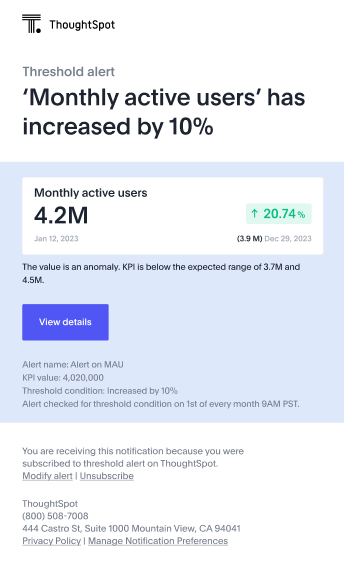
Query_groups optional grouping columns
Optional grouping columns are now available to all users and on by default. ThoughtSpot supports optional grouping columns in query_groups to ensure that only specified columns are included, if they are present in the query. A new syntax allows users to define an explicit optional list of grouping columns. Previously, you needed to manually exclude all other columns from the Model.
For more information, see Query_groups optional grouping columns.
Last value in period and first value in period functions
Last_value_in_period and first_value_in_period functions are now available to all users and on by default. These functions are useful for semi-additive measures, measures that typically return a single value per time period rather than being additive across time. For example, if you want to find out the last value for full-time employee headcount for the current date, you can use the formula, fxFTE = last_value_in_period(sum(full_time_employee), query_groups(), {date}).
For more information, see Last_value_in_period and first_value_in_period functions.
Other features and enhancements
Async Import TML utility Early Access
The Import TML can now also be done asynchronously from the new TML utility. This allows users to trigger TML imports directly from the UI, which are processed as asynchronous jobs in the backend. You can enable this feature from the Data modelling option under Application Settings on the Admin settings page. Once enabled, you can access the new UI from the Data workspace > Utilities page.
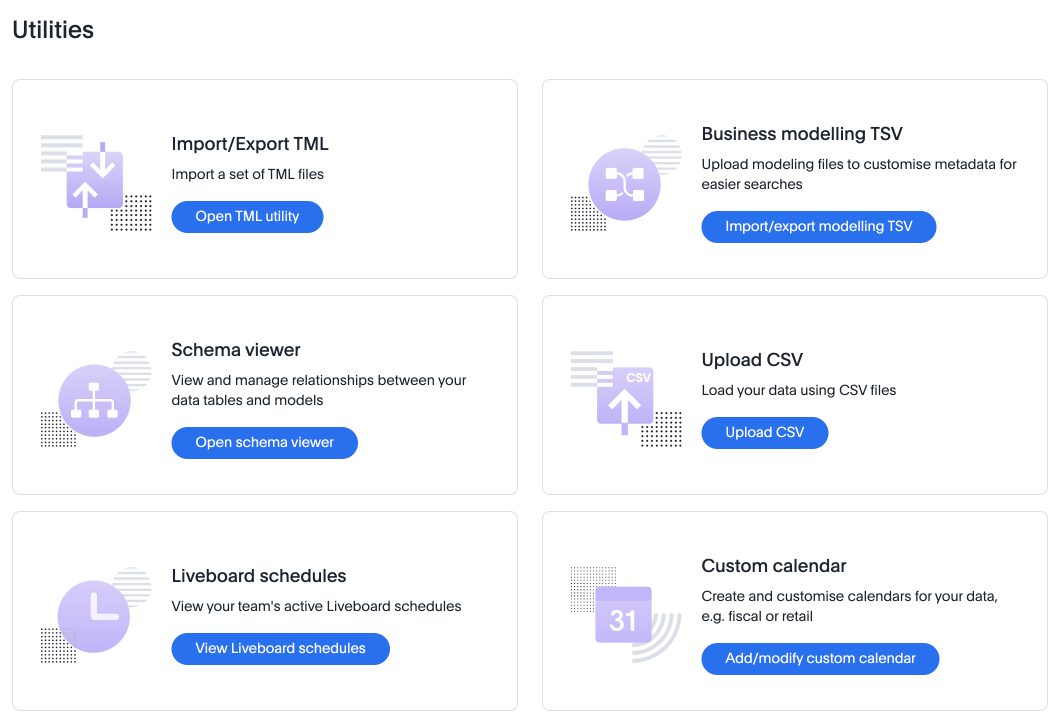
Bridge support for cloud data warehouses
Bridge provides options to securely connect your data source with ThoughtSpot Cloud, as an alternative to PrivateLink, VPC Peering, or VPN tunnels. We expanded support for Bridge to include the following connectors:
-
Azure Synapse
-
ClickHouse
-
Dremio
For more information, see Bridge connectivity for Cloud Data Warehouses and Databases.
Multiple configurations per connection
In addition to Snowflake, we now support multiple configurations for Databricks and Google BigQuery. This feature allows you to allocate a separate configurations for different ThoughtSpot users, groups, or processes, eliminating the need to duplicate Liveboards and configure multiple connections, and helping you with cost tracking and governance. You can also use this for your system processes so that you can control and balance the computing load.
Add user-defined ID (object ID) in TML Beta
You can now directly add or edit an object ID in the TML of an Answer, table, Model, Liveboard, or View. This user-defined object ID allows you to manage content across multiple Orgs without having to manually change the GUID of an object each time you move it between Orgs. To enable this feature, contact ThoughtSpot support.
For more information, see Object ID in TML files.
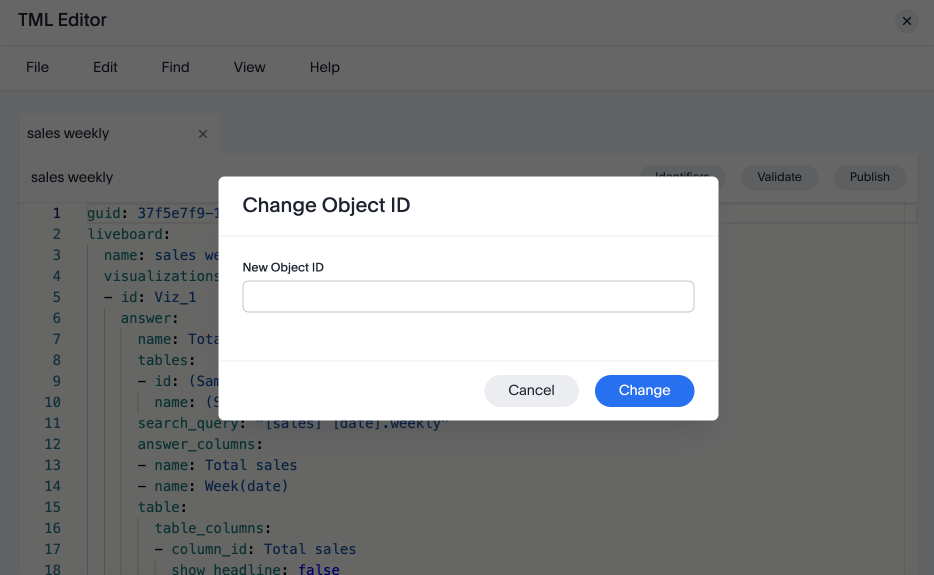
For the Developer
For new features and enhancements introduced in this release of ThoughtSpot Embedded, see ThoughtSpot Developer Documentation.







